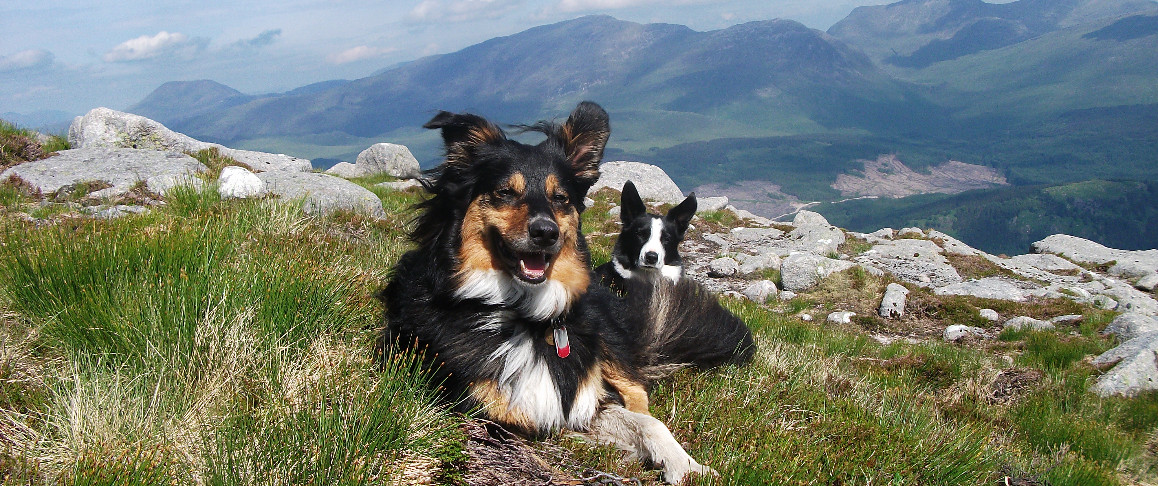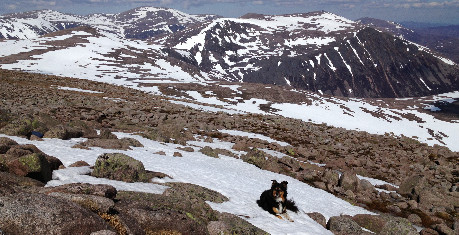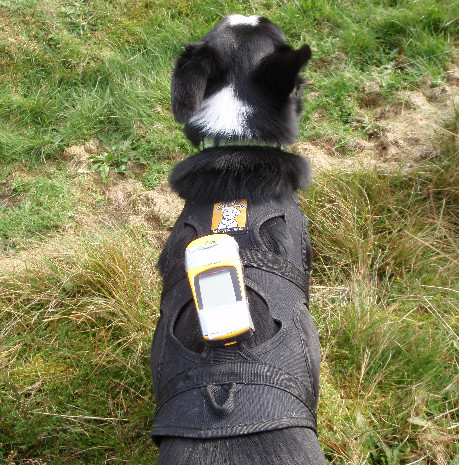
Sharing a day in the hills with your dog is a rewarding experience. Most dogs have an endless enthusiasm for walking and roaming across ridges, plateau and moorland. And wandering the hills with your canine companion will create a lifetime of happy memories.
But you should remember that at all times on the hill, you are totally responsible for your dog’s safety and wellbeing.
Dog
owners are also responsible for ensuring their dog doesn’t disturb other
animals. Never let your dog worry or attack livestock and during the bird
breeding season (usually April to June) keep your dog under close control or on
a short lead in areas such as mountain, moorland, forests, grassland, loch
shores and the seashore.
This section is intended as a guide for those just starting out in the hills with their dogs to equip them to live up to their responsibilities both to the dogs and to the natural habitat.
Certain breeds will be better suited to hill walking than others. Medium sized dogs such as collies, spaniels or Labradors are athletic breeds ideally suited to running all day in the hills. However, with sufficient preparation, any breed of dog can be trained to become a fantastic mountain companion.
Owners of small or large breed dogs and puppies should make sure they take advice from their vet or a qualified dog trainer on the right age to start taking their dogs into the mountains, as this will vary from breed to breed. During their first 6 -12 months a dog’s bones, joints and soft tissues are developing rapidly and it is extremely important not to over-exercise young dogs during this period to prevent long term skeletal damage.
Just like their owner’s dogs need time to build up their fitness so they can manage a long day over rough terrain in the mountains.
Start off with short days, gradually building up the time, distance and ascent as your dog gains fitness. It is also important to allow your dog time to recover after a day on the hills as too much too soon will lead to muscle and soft tissue injuries.

Paws
A main part of getting your dog fit for the hills is to toughen up their paws. A dog that is used to being walked in fields or parks will have soft paw pads which will be cut and grazed easily when exposed to rough rocky terrain in the mountains.
Build up time walking on pavements, paths and landrover tracks to tough up their paw pads. Gradually build up the length of time a dog spends on rocky terrain and the pads will toughen naturally without injury.
Gabbro and quartz are very likely to cause injury to your dog's paws and time on this type of rock should be limited until the dog has ‘paws of steel’.
Dog boots seem like a good idea but dogs dislike wearing them and they are prone to rubbing and slipping and can cause the pads to become waterlogged and soft and more prone to injury. There is no substitute to gradually toughening up the paws naturally.
Recovery
Dogs are natural athletes but are still prone to the same wear and tear and fatigue that we suffer after a day on the hill. Learning appropriate massage techniques will help your dog recover quickly from a hill walk and allow you to check for ticks, lumps, bumps and cuts at the same time. A qualified Veterinary Physiotherapist or T-touch Practitioner will be able to teach you the appropriate massage therapies for your dog.
When taking your dog out for a day in the hills a small amount of additional equipment is advised.

No, it's a joke. The harness may be handy, but your dog doesn't need its own GPS.